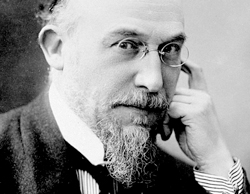by Mike Telin

The program, titled Music, Mind, Mirth, and Mayhem, opened with the premiere of Six Pièces à la Satie. Although each work lasted no longer than three and a half minutes, pianist Nicholas Underhill’s astute ordering of the six miniatures created the trajectory of a single unified composition.
Geoffrey Burleson’s melodic Lettres Dansantes: Hommage à E. Satie is an attractive work with hints of jazz sprinkled in. Arpeggios from the top to the bottom of the keyboard dominated Timothy Beyer’s Forests: real and imagined, until the piece ended with a nod to Satie’s Gnossienne No. 3. James Praznik highlighted Satie’s penchant for repetition in his Spiritualités Simultané. Robert Honstein only makes use of the “white” keys in his Chant Extatique, playing on Satie’s assertion that he only ate white food. David Rakowski’s Gnöpélledie is an inventive three-minute set of variations, with a hint of ragtime. Kevin Eppich’s impressionistic Pensées Têtues brought the set to a fitting conclusion with its cadenza-like ending. Nicholas Underhill, as always, played with sensitivity and technical agility.
While the 1963 performance of Erik Satie’s Vexations organized by John Cage lasted over 18 hours, James Praznik has creatively woven the central theme from Satie’s work into his own engaging 10-minute realization of Satie’s performance directions. During the five short movements marked “ou il est question de pardon musique spectrale;” “pause — Trés Lent;” “pour le pauvre minimalisme europèen;” “pause — Assez vif;” and “A propos de Satie et Boulez,” Praznik provides the players with thematic material that is to be used as a point of departure for improvisation. While there were many great solos, trumpeter Scott McKee’s and bass clarinetist Gunnar Owen Hirthe’s were standouts. Fittingly, Praznik ends his Vexations? with a reference to Satie’s Gymnopédies.
Three works in diverse musical styles separated the two Satie tributes.
Heinz Holliger’s Duo for Violin and Cello is full of inventive musical shifts between free tonality and lush Western harmonic progressions that create an intriguing sound palette. Written in two sections — the first defined by sustained lyrical passages, the second a swift articulated perpetual motion — the work is sonically engaging. Violinist Cara Tweed and cellist Nicholas Diodore performed it brilliantly.
Introducing his new work, composer Buck McDaniel said that Ride is not a car ride but rather an abstract ride. A fast car ride or not, the 6- minute-plus work is full of excitement: minimalist rhythms play off of each other, while lyrical passages float above. A slower, syncopated middle section lets you catch your breath before the pedal hits the metal once again. Underhill, Tweed, and Diodore, who were joined by flutist Linda White and percussionist Luke Rinderknecht, gave Ride’s premiere a compelling performance.
Known more for his 351 film scores than his chamber music, French composer Georges Delerue’s Diptyque for solo flute is full of color and creative rhythmic lines. The two movements, “Poco lento,” and “Allegro,” explore all that is good about the instrument. Sean Gabriel played the idiomatic work with flair: its technical passages were clean, its melodic lines well shaped.
Published on ClevelandClassical.com April 20, 2016.
Click here for a printable copy of this article



